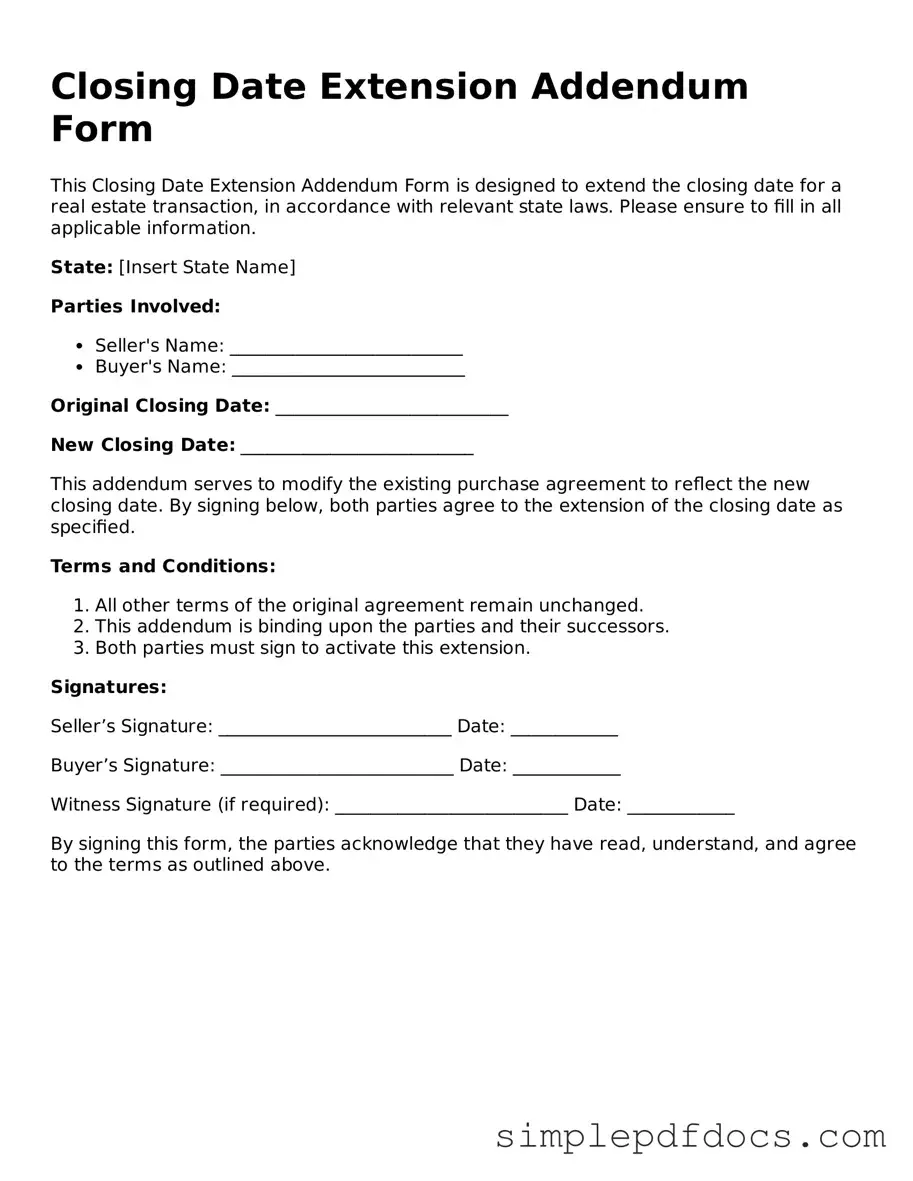In the dynamic world of real estate transactions, timing is often crucial, and unforeseen delays can create significant challenges for both buyers and sellers. The Closing Date Extension Addendum Form serves as a vital tool in these situations, allowing parties involved in a real estate deal to formally extend the closing date when necessary. This form is particularly useful when issues arise, such as financing complications, appraisal delays, or unexpected repairs that require additional time to address. By utilizing this addendum, both parties can maintain clarity and legal protection, ensuring that their interests are safeguarded while they navigate the complexities of the closing process. The form typically outlines the new closing date, any conditions that must be met before the extension takes effect, and may even include provisions for additional earnest money deposits or other considerations. Understanding the nuances of this addendum can empower both buyers and sellers to manage their transactions more effectively, fostering a smoother path toward a successful closing.
